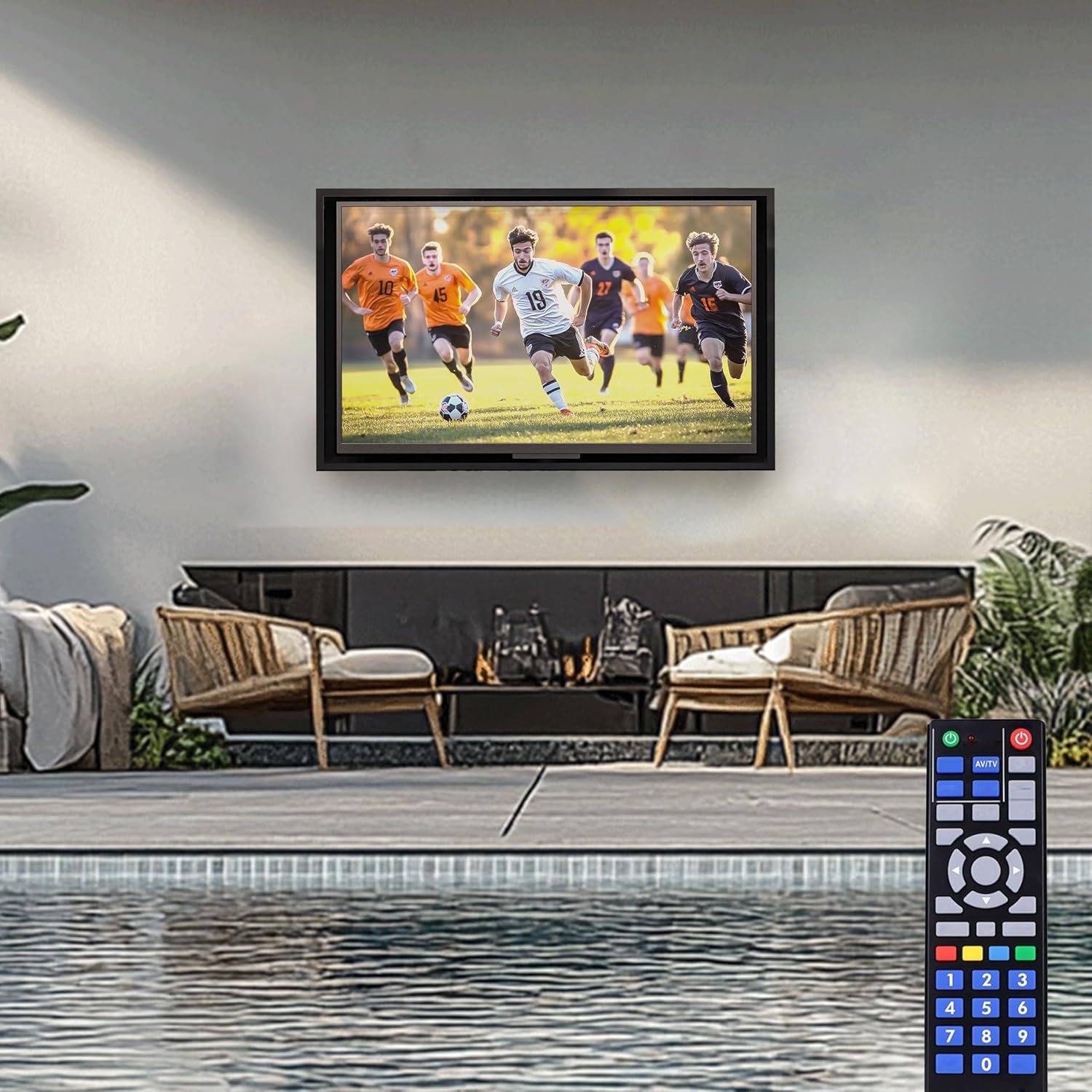
4 Things You Need to Know About Weatherproof TV Cabinets
Creating the perfect outdoor living area often means bringing the comforts of the indoors out, and a TV is frequently at the top of that list. Whether for watching the big game during a barbecue or hosting a movie night under the stars, an outdoor TV setup can transform a patio or deck. However, simply mounting a standard indoor TV outside is a recipe for disaster.
A weatherproof TV cabinet is a popular and effective solution. It’s more than just a box; it’s an engineered enclosure designed to protect your investment from the elements. Before you buy one, here are the five most important things you need to know.
1. It's About More Than Just Rain
The term "weatherproof" might make you think only of rain and snow, but a quality enclosure offers comprehensive protection against a wide range of environmental threats. It acts as your TV's personal bodyguard, shielding it from:
-
Moisture: This includes not just rain and snow but also humidity, condensation, and dew, which can short-circuit electronics. Look for cabinets with proper seals and gaskets.
-
Temperature Extremes: Drastic shifts in temperature can damage a TV's sensitive components. While most cabinets don't have active heating or cooling, their insulated construction helps buffer the TV from the most extreme hot and cold swings.
-
Dust and Debris: Windblown dust, pollen, and dirt can clog vents and coat internal components, leading to overheating and failure.
-
Insects and Pests: Small creatures are notorious for seeking shelter in electronic equipment. A sealed cabinet prevents them from getting inside and causing damage.
-
Impact and Security: The durable shell protects the TV from physical impacts like a stray ball or falling branch. Furthermore, most enclosures come with locks to deter theft, a crucial feature for any valuable electronic device left outside.
2. Material and Construction Make a Huge Difference
Not all TV cabinets are created equal. The material used in their construction directly impacts their durability, weight, and longevity. The most common materials are:
-
Powder-Coated Aluminum/Steel: This is a premium choice. Metal enclosures are extremely durable, secure, and offer excellent protection against impact. A high-quality powder coating prevents rust and corrosion, making them a long-lasting but often heavier and more expensive option.
-
ABS Plastic (or HMWPE): Many popular enclosures are made from high-quality, UV-resistant plastics like Acrylonitrile Butadiene Styrene (ABS) or High-Molecular-Weight Polyethylene (HMWPE). These materials are lightweight, won't rust, and are very effective at sealing out water. However, over many years of direct sun exposure, very low-quality plastic can become brittle.
-
Wood: While aesthetically pleasing, wood is generally a poor choice for a truly weatherproof enclosure. It requires constant maintenance (sealing, staining) and is susceptible to warping, rot, and insects. It is rarely used for modern, high-performance TV cabinets.
Pro Tip: Look for an IP (Ingress Protection) rating. This standardized rating tells you exactly how protected the enclosure is against solids (like dust) and liquids. A rating of IP55, for example, means it's protected from dust ingress and low-pressure water jets from any direction—more than enough for most residential outdoor settings.
3. Compatibility and Sizing Are Crucial
You can't just buy any cabinet for any TV. You must ensure the cabinet you choose is the right fit. Consider these three dimensions:
-
Screen Size: Cabinets are sold based on the diagonal screen size they can accommodate (e.g., "for 40-50 inch TVs"). Always check that your TV's size falls within the specified range.
-
TV Dimensions (W x H x D): Pay close attention to the actual external dimensions of your television—width, height, and especially depth. Older TVs or models with bulky backs might not fit in a slim, modern enclosure. Measure your TV and compare it to the cabinet's internal dimensions listed by the manufacturer.
-
VESA Mount Pattern: VESA is the standard mounting pattern of four holes on the back of your TV. The cabinet will have an internal bracket that needs to match your TV's VESA pattern (e.g., ). Check both your TV's specifications and the cabinet's supported VESA patterns to ensure they are compatible.
4. Key Features to Look For: Ventilation, Security, and Access
The difference between a basic box and a great TV enclosure lies in the details. Here are some key features that add significant value and functionality:
-
Ventilation: Electronics generate heat. A completely sealed box would cause the TV to overheat. Look for enclosures with a filtered ventilation system, or even thermostatically controlled fans, to circulate air and dissipate heat while keeping moisture and dust out.
-
Secure Locking System: A simple latch won't deter a determined thief. Look for cabinets with key locks or even dual-locking mechanisms for added security.
-
Cable Management: Proper routing for power, HDMI, and other cables is essential. A good cabinet will have weatherproof rubber grommets or sealed passthroughs to run cables out of the enclosure without compromising the seal.
-
Front Cover/Door Mechanism: How does the cabinet open? Many have a hinged front panel that swings up or to the side. Models with gas struts (like those on an SUV's rear hatch) are a premium feature that makes opening and closing the unit smooth and effortless.
-
Anti-Glare Screen: The front panel of the cabinet is a clear shield. Some higher-end models use shatterproof, anti-glare polycarbonate to reduce reflections and improve daytime viewing.
